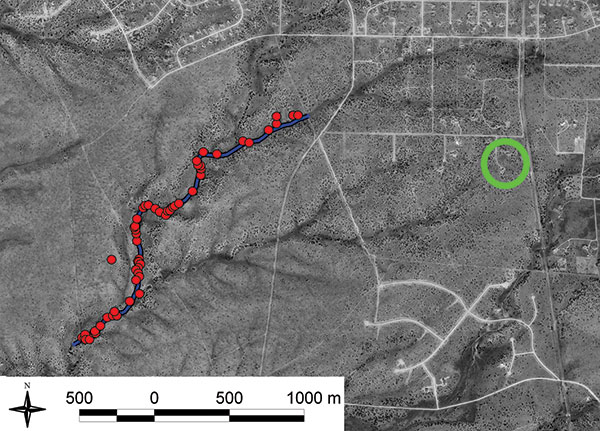Volume 15, Number 10—October 2009
Dispatch
Fine-scale Identification of the Most Likely Source of a Human Plague Infection
Figure 1

Figure 1. Distribution of rodent trapping stations along a hiking trail in Santa Fe County, New Mexico, USA. Each red circle indicates a single trapping site that had 3 traps. Trap stations (not shown) also were placed throughout the patients’ yard (green circle).
Page created: December 08, 2010
Page updated: December 08, 2010
Page reviewed: December 08, 2010
The conclusions, findings, and opinions expressed by authors contributing to this journal do not necessarily reflect the official position of the U.S. Department of Health and Human Services, the Public Health Service, the Centers for Disease Control and Prevention, or the authors' affiliated institutions. Use of trade names is for identification only and does not imply endorsement by any of the groups named above.